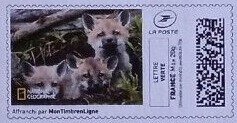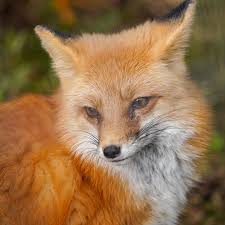Stamp: Fox Cubs in colour (France 2019)
Fox Cubs in colour (France 2019)
01 January (France ) within release MonTimbrEnLigne. National Geographic goes into circulation Stamp Fox Cubs in colour face value Lettre No Face Value
Stamp is square format.
Also in the issue MonTimbrEnLigne. National Geographic:
- Stamp - Fox Cubs in colour face value Lettre;
- Stamp - Leopard 1 face value Lettre;
- Stamp - Leopard 2 face value Lettre;
- Stamp - Lioness face value Lettre;
- Stamp - Male Lion 1 in colour face value Lettre;
- Stamp - Male Lion 2 face value Lettre;
- Stamp - Meerkats face value Lettre;
- Stamp - Riding in the desert face value Lettre;
- Stamp - Tiger 2 face value Lettre;
- Stamp - Pont de Gard in black face value Lettre;
- Stamp - Woodpecker in black face value Prioritaire;
- Stamp - Leopard 2 in black face value Lettre;
- Stamp - Macaw 2 in black face value Lettre;
- Stamp - Turtle in black face value Lettre;
- Stamp - Zebra face value Lettr;
- Stamp - Bald Eagle (Haliaeetus leucocephalus) in black face value Lettre;
|
Data entry completed
46%
|
|
|---|---|
| Stamp Fox Cubs in colour in digits | |
| Country: | France |
| Date: | 2019-01-01 |
| Emission: | Personalized - Official |
| Format: | Stamp |
| Face Value: | Lettre No Face Value |
Stamp Fox Cubs in colour it reflects the thematic directions:
Animals are multicellular, eukaryotic organisms of the kingdom Animalia (also called Metazoa). All animals are motile, meaning they can move spontaneously and independently, at some point in their lives. Their body plan eventually becomes fixed as they develop, although some undergo a process of metamorphosis later on in their lives. All animals are heterotrophs: they must ingest other organisms or their products for sustenance.
Foxes are small-to-medium-sized omnivorous mammals belonging to several genera of the family Canidae. They have a flattened skull; upright, triangular ears; a pointed, slightly upturned snout; and a long, bushy tail ("brush").
A juvenile is an individual organism (especially an animal) that has not yet reached its adult form, sexual maturity or size. Juveniles can look very different from the adult form, particularly in colour, and may not fill the same niche as the adult form. In many organisms the juvenile has a different name from the adult (see List of animal names).
Mammals are any vertebrates within the class Mammalia (/məˈmeɪli.ə/ from Latin mamma "breast"), a clade of endothermic amniotes distinguished from reptiles (including birds) by the possession of a neocortex (a region of the brain), hair, three middle ear bones and mammary glands. All female mammals nurse their young with milk, secreted from the mammary glands. Mammals include the largest animals on the planet, the great whales. The basic body type is a terrestrial quadruped, but some mammals are adapted for life at sea, in the air, in trees, underground or on two legs. The largest group of mammals, the placentals, have a placenta, which enables the feeding of the fetus during gestation. Mammals range in size from the 30–40 mm (1.2–1.6 in) bumblebee bat to the 30-meter (98 ft) blue whale. With the exception of the five species of monotreme (egg-laying mammals), all modern mammals give birth to live young. Most mammals, including the six most species-rich orders, belong to the placental group. The largest orders are the rodents, bats and Soricomorpha (shrews and allies). The next three biggest orders, depending on the biological classification scheme used, are the Primates (apes and monkeys), the Cetartiodactyla (whales and even-toed ungulates), and the Carnivora (cats, dogs, seals, and allies).




